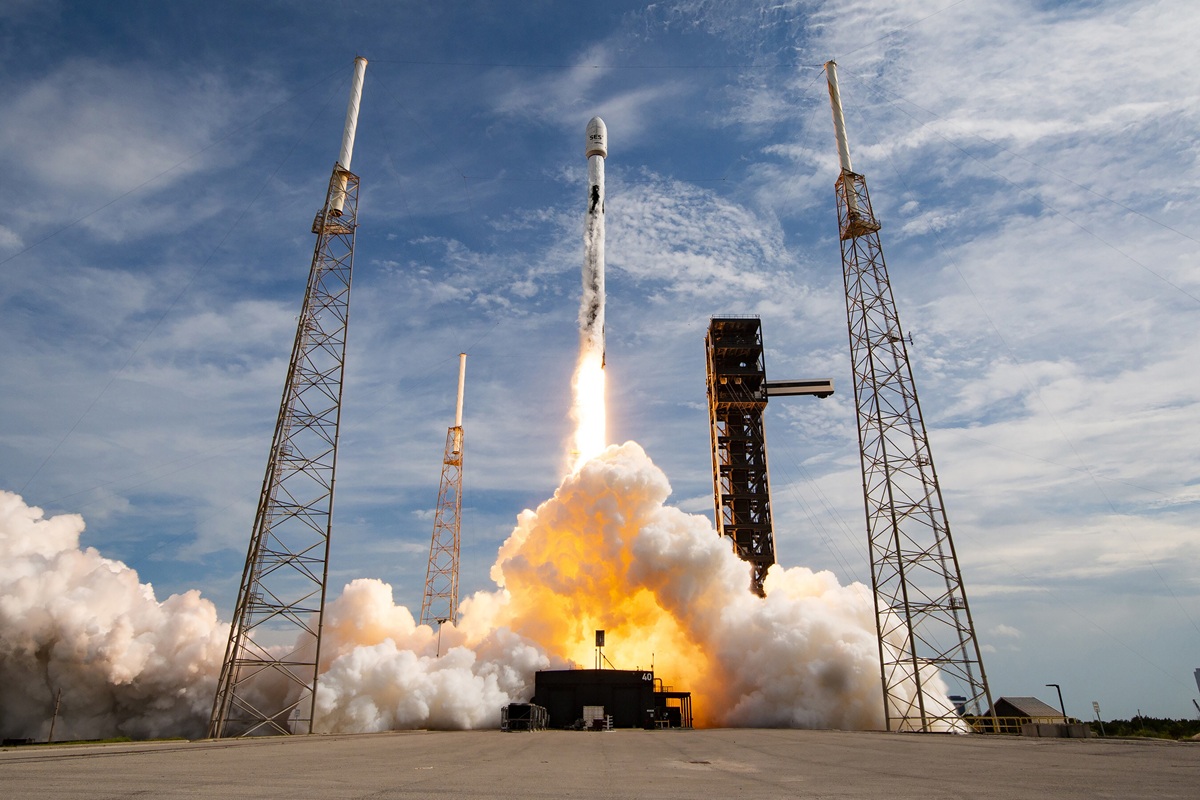NASA is extending a rare invitation to people across the globe to leave their mark on humankind’s return to deep space. Through its “Send Your Name with Artemis II” campaign, the agency is now offering the public a chance to join four astronauts on the first crewed mission of the Artemis program—not physically, but symbolically—by sending their names on board the Orion spacecraft as it embarks on a journey around the Moon and back.
The opportunity runs until January 21, 2026, allowing anyone to sign up and receive a digital boarding pass placing their name alongside NASA’s most ambitious flight in decades. The spacecraft, powered into orbit by the Space Launch System (SLS) rocket, is scheduled for liftoff no later than April 2026. This 10-day voyage represents a critical test of the technologies required for future human exploration, not just on the Moon but for the long-term goal of reaching Mars.
First Step Toward a New Era
Artemis II will carry a four-person international team. Commanding the flight will be NASA astronaut Reid Wiseman, with fellow Americans Victor Glover and Christina Koch serving as pilot and mission specialist respectively. Representing Canada will be astronaut Jeremy Hansen from the Canadian Space Agency, marking a historic milestone for Canadian human spaceflight participation in deep-space missions.
This mission is more than just a test—it is a dress rehearsal for Artemis III, when astronauts are expected to once again set foot on the lunar surface, more than half a century after Apollo 17 closed out that era in 1972. By flying around the Moon without a lunar landing, Artemis II offers NASA a proving ground to evaluate life support systems, crew interactions, navigation, and communication networks in preparation for bigger ventures.
In official remarks, Lori Glaze, acting associate administrator for Exploration Systems Development at NASA Headquarters, highlighted the importance of blending public engagement with bold exploration objectives. “Artemis II is not just about testing spacecraft hardware and systems,” she said. “It’s also about sparking imagination, inviting people everywhere to feel part of humanity’s next giant leap.”
Sending Names to the Moon
Those who participate in the initiative will see their names carried into space on a special SD card secured aboard the Orion spacecraft. Every person signing up can claim a personalized digital boarding pass, making the experience more tangible and collectible. Accessible in both English and Spanish, the sign-up process emphasizes inclusivity, aligning with NASA’s wider mission of inspiring global audiences with space exploration.
Unlike routine outreach efforts, this campaign taps into a symbolic tradition. NASA has previously flown names on Mars rovers and other spacecraft, but the Artemis II flight introduces a more profound element—the return of humankind to lunar proximity with the next stop being Mars. By offering people on Earth a direct connection to this pioneering voyage, the agency aims to cement collective ownership of what it frequently terms humanity’s future “off-world.”
A Golden Age of Spaceflight
NASA has framed Artemis within what many now call a Golden Age of space innovation. With commercial companies accelerating access to orbit and research institutions collaborating more broadly than ever, Artemis represents a deliberate push by the United States, in partnership with international allies, to sustain long-term human presence beyond Earth. Beyond simply returning astronauts to the Moon, Artemis will lay the foundation for a sustained outpost near the Moon, with a focus on learning how to operate farther from Earth in preparation for voyages to Mars.
NASA has made it clear that Artemis II is not simply a symbolic demonstration but a milestone that will change how future exploration unfolds. By circling the Moon—without touching its surface—astronauts will test critical procedures for entry, orbit control, deep-space communication, and crew operation under extended conditions. These trials are necessary precursors for sending astronauts to live and work on the lunar surface.
Global Momentum and Public Imagination
With Artemis, NASA is also emphasizing the power of inspiration and shared discovery. Public participation initiatives have proven effective at creating lasting emotional connections with scientific missions. In previous instances, tens of millions of names have been submitted for journeys aboard spacecraft to destinations such as Mars. NASA is betting that Artemis II’s unprecedented scope—a human-crewed mission venturing farther from Earth than any spacecraft since Apollo—will attract similarly enthusiastic engagement worldwide.
For nations allied in exploration—including Canada, Europe, and Japan—the mission also symbolizes a broader spirit of international cooperation. By featuring Jeremy Hansen as a prominent crew member, Artemis II highlights Canada’s vital contributions and also projects the global reach of this new exploration chapter.
How to Get Involved
Anyone interested can submit their name through NASA’s dedicated portals. Upon registering, participants receive a virtual “boarding pass” documenting their passage aboard Orion, complete with mission details and design elements echoing the Artemis insignia. The initiative effectively turns one of the world’s most advanced spacecraft into a vessel of collective human symbolism—carrying not only technology and a crew, but also millions of intangible connections to people back on Earth.
The Artemis campaign is racing against significant expectations. With launch targeted for no later than April 2026, NASA is orchestrating a rigorous series of tests and evaluations to ensure that every system, from avionics to life support, functions to perfection. When it flies, Artemis II will not only demonstrate new technologies but also rekindle the world’s fascination with the Moon as a staging point for the next frontier—Mars.
In opening Artemis II to public participation, NASA is making a broader statement: that humanity’s quest to explore the cosmos is not reserved for astronauts alone. Every name aboard Orion represents a shared aspiration that transcends national borders and personal boundaries. As NASA and its partners edge closer to landing the first woman and the next man on the lunar surface, they are equally determined to make the world believe that this mission belongs to all of us.
To add your name and receive an English-language boarding pass, visit here:
To learn more about the mission visit here:




